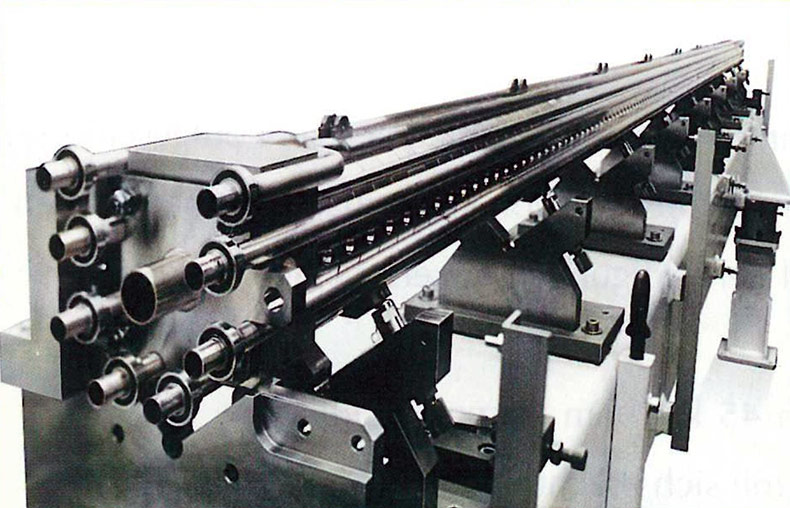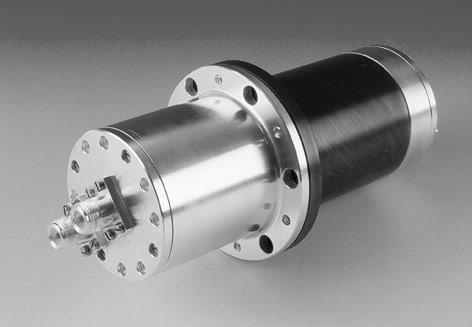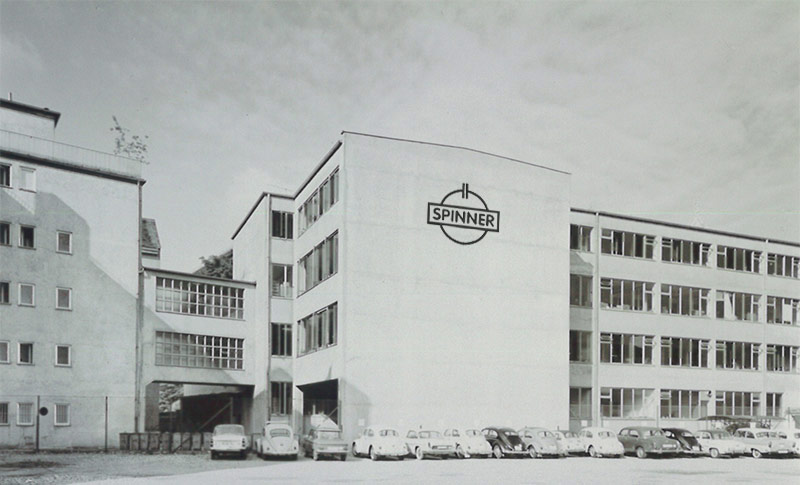1967 – Entering the High Energy Industry
1967
Entry into High-Energy Physics
SPINNER supplies the first high-power lines for the proton synchrotron at CERN in 1967.

The Proton Synchrotron (PS) of CERN (Conseil européen pour la recherche nucléaire – the European Organisation for Nuclear Research near Geneva in Switzerland) accelerated protons for the first time on 24 November 1959, making it the highest energy particle accelerator in the world for a short time. With a beam energy of 28 GeV, the PS became host to CERN’s particle physics programme and still provides beams for experiments today.
For this proton synchrotron, SPINNER supplied coaxial transmission lines including phase shifters, stub tuners and directional couplers RL 100-230 in 1967, which were used for transmitter matching at a power of 250 kW at 200 MHz.
After CERN built new accelerators in the 1970s, the PS was mainly used to feed particles to the new machines. But since it first began operating back in 1959, the intensity of its proton beam has increased a thousandfold. With a circumference of seven kilometers, the super proton synchrotron (SPS) built next became the first of CERN’s gigantic subterranean rings. It was also the first to cross the French-Swiss border. It was powered up for the first time on June 17, 1976, two years earlier than originally planned.
The SPS quickly became the workhorse of the CERN particle physics program, being operated with a beam energy of up to 400 GeV. Research with SPS beams has provided glimpses of the internal structure of protons, studied nature’s preference for matter over antimatter, searched for kinds of matter which may have existed during the universe’s first moments after the Big Bang, and looked for exotic kinds of matter.
In 1973, SPINNER filled a large order for numerous 150-345 RF transmission lines for the 200 MHz super proton synchrotron (SPS), including combiners for four transmitters with an output of 500 kW each. Yet another milestone for SPINNER, in 1978, was when it supplied 16x combiners for switching 16 transmitters in parallel, each of which had an output of 60 kW, CW at 200 MHz.
Other developments followed later, including a size 150-345 coaxial switch for one megawatt, CW at 200 MHz, and an eight-transmitter combiner with 8×60 kW, CW at 800 MHz. SPINNER is proud to continue making a small contribution to achieving new insights in particle physics, some of which have broken new ground and earned Nobel Prizes.




